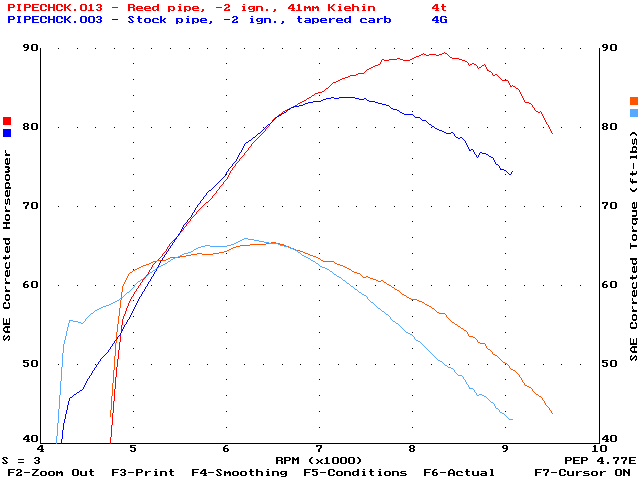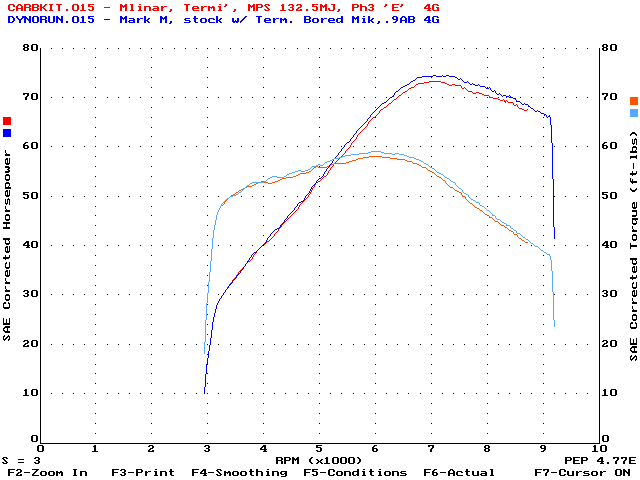
This incredible result is usually credited to the Keihin carbs. While they are excellent instruments, the increase in airflow, when attached to the heads, isn't nearly enough to explain this improvement.

The RPM increase is caused by a shift in intake resonant frequency, a result of changed inlet length.
Another way of looking at it would be, the stock inlet length hurts the engines ability to produce torque above 7000 RPM.
With the stock 38mm carbs that come on the 900 Ducatis, there appears to be some turbulence over the 7000 RPM range which makes the power curve bumpy, (on a Dyno Jet chart), replacement carbs can raise the power by about 1 1/2 HP by smoothing this out. This phenomenon is more noticeable when the airflow (power) is higher, when ported heads and hi-compression pistons are installed.
Below is an example of a ported 944cc engine with stock carbs and with 39mm Keihins on the same manifolds.
Notice the 'un-smooth' curve of the stock carbs.
When a component has a characteristic, or several characteristics, I don't believe in, automatically, throwing it away. This is the case with the stock carbs.
The way they fit with the stock air-box which houses the battery and coils, is an important characteristic too. (You see, I'm a maintainence guy, and if I have to work on it, that makes a difference) The stock 900 Ducati carbs are almost the same carbs that come on GSXRs, the 'Slingshot' carbs (except for a down-draft conversion). They can't be too bad!
These often have a ripped 'O'ring which can cause poor low speed running. And, the emulsion tubes aren't executed properly, so I deal with that as part of my jet-kit.
So, fixing these problems cures the response issue. They will never feel like a slide type carb because they are CVs, but if they respond properly they feel good.
Taper-boring the carb bodies and trimming the throttle shafts appears to do the trick. The power curve gains and smoothes out, just like when using 39mm Keihins.

This chart is a stock 900SS with only a change to taper-bored stock carbs.
Again, these are the results one expects from a carb change, with the minimum disruption to the component layout and servicability.